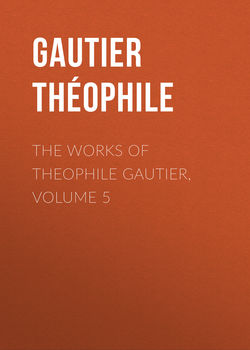Читать книгу The Works of Theophile Gautier, Volume 5 - Gautier Théophile - Страница 1
The Romance of a Mummy
Introduction
ОглавлениеThe subject of "The Romance of a Mummy" was possibly suggested to Théophile Gautier by Ernest Feydeau, the author of "Fanny" and other works of purely light literature, who published in 1858 a "General History of Funeral Customs and Burials among the Ancients." This book was reviewed by Gautier when it appeared, and it is most likely that he had been previously made acquainted with its contents and had discussed Egyptian funeral rites and modes of sepulture with the author, for it was to Feydeau that he dedicated his novel when it was published in book form by Hachette in 1858. An omnivorous reader, Gautier had no doubt also perused the far more important works of Champollion, the decipherer of the inscriptions on the Rosetta stone, who first gave the learned world the key to the mysterious Egyptian hieroglyphic alphabet. Champollion's "Monuments of Egypt and Nubia" had appeared in four volumes from 1835 to 1845, and a continuation by himself and the Vicomte Emmanuel de Rougé was completed in 1872. Champollion-Figeac's "Ancient Egypt" had been published in 1840, having been preceded by Lenormant's "The Museum of Egyptian Antiquities in the Louvre," in 1830, and followed by Prisse d'Avennes' "Monuments of Egypt" in 1847. The explorations and discoveries of Mariette, summed up in that writer's "Selected Monuments and Drawings," issued in 1856, and the steady growth of the Egyptian Museum in the Louvre, to which was added in 1852 the magnificent Clot-Bey collection, must have attracted the attention of Gautier, always keenly interested in art, literature, and erudition.
The account he gives, in his novel, of the ancient city of Thebes, of the great necropolis in the valley of Biban el Molûk, of the subterranean tombs, of the precautions taken by the designers to baffle curiosity, of the form and ornamentation of the sarcophagi, of the mummy-cases, of the mummy itself, of the manners, customs, dress, and beliefs of the ancient Egyptians, are marvellously accurate. Nothing is easier than to verify his descriptions by reference to the works of Champollion, Mariette, Wilkinson, Rawlinson, Erman, Edwards, and Maspero. Scarcely here and there will the reader find a possible error in his statements. It is evident that he has not trusted alone to what Feydeau told him, or to what he read in his book or in the works of Egyptologists; he examined the antiquities in the Louvre for himself; he noted carefully the scenes depicted on monuments and sarcophagi; he traced the ornamentation in all its details; he studied the poses, the attitudes, the expressions; he marked the costumes, the accessories; in a word, he mastered his subject, and then only did he, with that facility and certainty that amazed Balzac, write in swift succession the chapters of the novel which appeared in the numbers of the "Moniteur Universel" from March 11 to May 6, 1857.
His remark on Feydeau's book, "Picturesqueness in no wise detracts from accuracy," might well be applied to his own "Romance," which fascinates the reader with its evocation of a long vanished past and its representation of a civilisation buried for centuries in mystery. The weaving in of the wonders wrought by Moses and Aaron, of the overwhelming of the Pharaoh, whether Thotmes or Rameses, is skilfully managed, and imparts to the portions of the Biblical narrative used by him a verisimilitude and a sensation of actuality highly artistic. The purely erudite part of the work would probably not have interested the general public, indifferent to the discoveries of archæology, but the introduction of the human element of love at once captivated it; the erudite appreciated the accuracy of the restoration of ancient times and manners; the merely curious were pleased with a well told story, cleverly set in a framework whose strangeness appealed to their love of exoticism and novelty.
There have been added by the editor, as bearing upon the subject of the "Romance of a Mummy," two or three chapters from the volume entitled "The Orient," which is made up of a collection of sketches and letters of travel written at different times, and of reviews of books upon Eastern subjects, whether modern or ancient. The chapter describing a trip to Egypt was the result of a flying visit paid to that country on the occasion of the official opening of the Suez Canal in November, 1869. Gautier embarked on board the steamship "Moeris," of the Messageries Impériales, at Marseilles. The very first night out he slipped and fell down the companion steps, and broke his left arm above the elbow. This painful accident did not prevent his fulfilling his promise to keep the "Journal Officiel," with which he was then connected, fully supplied with accounts of the land and the inauguration ceremonies.
